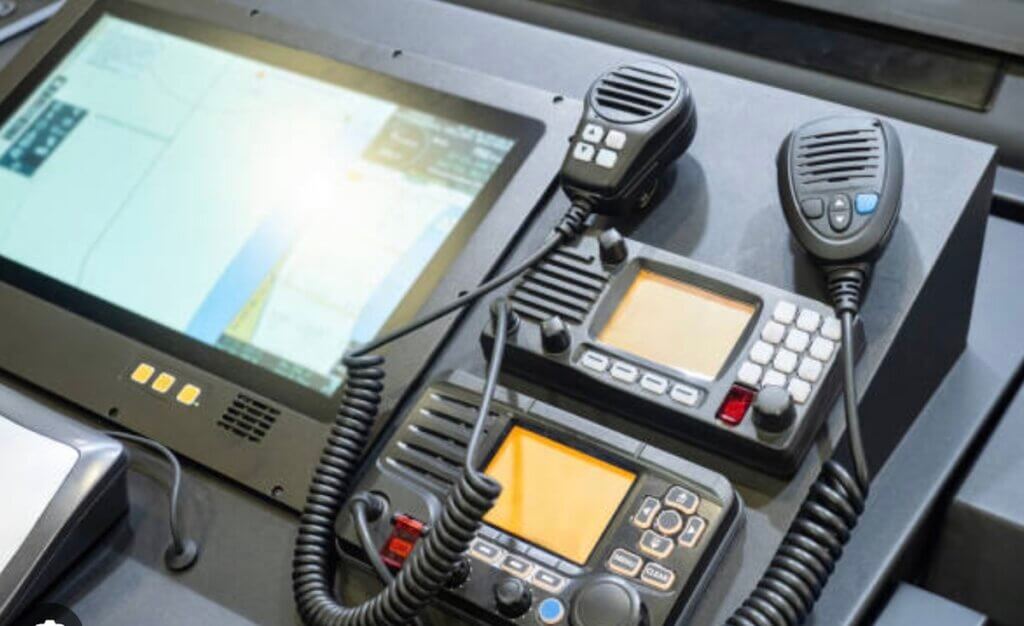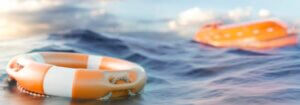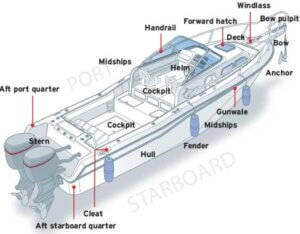
Shipboard communication makes life safer and smoother for everyone working at sea. When I step onto a ship, knowing how to send and receive information quickly and clearly matters as much as my technical or navigation skills. Without strong shipboard communication systems, dealing with daily operations or emergencies gets tricky in a hurry. I want to share my take on the essentials of marine communication, touching on traditional tools, new tech, and the habits every mariner should pick up.
Fixed Mount Marine Radio with GPS and DSC
Understanding Shipboard Communication Systems
The backbone of every safe voyage relies on a blend of tried-and-true radio with the latest technology. My first sea journeys taught me that every ship depends on a mix of hardware, protocols, and habits to make sure critical information flows smoothly. Shipboard communication systems are built so everyone—from deckhands to the bridge—always knows what’s happening.
There are several key parts to these systems:
- Internal Communication: Systems like the ship’s intercom, soundpowered phones, and alarms keep crew updated about operations and possible emergencies.
- External Communication: Radios, satellite systems, and navigation beacons let ships talk to each other and to shore authorities for both daily matters and emergencies.
This mix helps crews respond quickly to changing weather, equipment status, or nearby traffic. Getting familiar with the basics happens early in training and never really stops because the tech and protocols keep evolving.
How Marine Communication Techniques Work
Good marine communication is about more than picking the right radio channel. For me, day-to-day habits are as vital as the bridge equipment. Every instruction passed along—how it’s given, how it’s confirmed—affects crew safety.
- Closed Loop Communication: This habit, where the person receiving an order repeats it back, helps catch mistakes before they happen. I use this every watch, especially with steering or engine commands.
- Use of Standard Phrases: The International Maritime Organization’s standard set of phrases keeps communication clear, even for crews with different native languages.
- Clear, Concise Reporting: I keep messages short, make sure they include who’s talking, what’s happening, and what’s needed. Confirming these points prevents confusion.
With regular practice, these techniques become automatic, forming the backbone of daily operations and safety drills.
Shipboard Communication Tools You Should Know
I depend on some tried and tested shipboard communication tools each time I’m at sea. Being able to use each one under stress is as crucial as knowing where lifejackets are stored.
- VHF Radio (Very High Frequency): This is the main radio for bridge communication, shipping traffic, emergency calls, and safety alerts. Channel 16 is always monitored for distress signals.
- MF/HF Radio: Medium or high frequency radios reach much farther than VHF, connecting ships to shore even in remote waters.
- GMDSS (Global Maritime Distress and Safety System): GMDSS brings together satellite communications, Digital Selective Calling, EPIRBs, and NAVTEX alerts for a stronger safety net at sea.
- Handheld Radios: Crew members use these in the engine room, on deck, or during cargo operations to stay in constant contact.
- Intercom and Public Address Systems: The PA system is the go-to for shipwide messages, from fire drills to muster calls.
- Visual and Sound Signals: Ship whistles, bells, flags, and lights can pass on quick messages, especially if electronics are down or visibility is poor.
Knowing which tool to reach for—when to switch to a backup or revert to basic signals—keeps everyone prepared, no matter the weather or situation. Even though new gear comes along, most ships keep some classics on board because they’re reliable in a pinch.
Key Ship Communication Protocols
Protocols create a level playing field, making sure everyone follows the same guidelines when sending alerts or handling emergencies. The most well-known rules come from SOLAS, IMO, and ITU.
- Distress Protocol (MAYDAY): For grave emergencies, I’m trained to state position, the nature of distress, and what help is needed loud and clear, repeating details if necessary until receipt is confirmed.
- Urgency and Safety Calls (PANPAN, SECURITE): These signals are used for urgent but non-dangerous incidents or for navigation warnings. I always use the correct phrases and formats.
- Standard Marine Communication Phrases (SMCP): These keep conversations clear, especially with multinational crews.
- Radio Silence Protocol (“Seelonce Mayday”): Keeping the airwaves clear for emergencies makes rescue work possible without distractions.
Practicing these protocols regularly builds team confidence, which translates into calm, effective responses during stressful moments at sea.
Ship Communication Innovations in 2025
Technology in marine communications keeps raising the bar. Recent innovations shape how messages move across the sea—and who can get them.
- Satellite Broadband: Modern satellite networks now give even remote vessels highspeed data. I can send and receive real-time video, documents, and keep tabs on equipment anywhere on earth.
- Integrated Bridge Systems (IBS): The bridge now brings together navigation, communication, and engine control onto a single display, making multitasking safer and more efficient.
- Automated Alerts and AI: Some ships use AI-driven monitoring to flag risks and automatically report potential dangers to smartphone apps carried by crew members.
- Wearable Communication Devices: Smartwatches and wearable radios keep the team in the loop even during stormy weather or in loud environments like the engine room.
Anyone starting a maritime career should stay tuned to these changes. I make a habit of learning new equipment, because today’s upgrades might be tomorrow’s standard.
Best Practices for Marine Communication
The safest ships are run by crews who put communication front and center every day. My top marine communication habits include:
- Daily Equipment Checks: Before each watch or trip, I test radios, intercoms, and alarms, and report problems for quick fixes.
- Regular Drills: Frequent practice of emergency calls, fire alarms, and evacuation procedures sharpens everyone’s response.
- Clear Handovers: Ending a shift, I always summarize what’s happened and what’s coming up, leaving nothing out that the next team will need to know.
- Keep a Log: Tracking malfunction, unusual messages, or repairs helps the next shift avoid surprises.
- Consistent Language: Even if accents differ, I stick to simple English and agreed-upon words to cut down on miscommunication. If I sense confusion, I double back and clarify in simpler terms.
Sticking to these routines helps everyone stay ready, calm, and safe every day at sea.
Common Challenges and How to Deal With Them
Problems in shipboard communication can come out of nowhere, but knowing the usual suspects makes them easier to fix.
- Equipment Failure: Saltwater, heavy weather, or dead batteries cause headaches. I always know the manual backup—be it hand signals, the PA, or a ship’s bell.
- Language Barriers: Multinational crews are awesome, but accents and different backgrounds can cause mixups. I repeat vital info, use SMCP, write things down, or even draw quick sketches to make sure we all get it.
- Radio Interference: In busy ports, airwaves get crowded. I watch for my turn and keep messages quick and to the point.
- Fatigue or Distraction: A Tired crew misses crucial info, so I rest up and limit noise or confusion during calls. If I’m unsure, I ask again straight away.
Expecting the unexpected and keeping backup plans ready is the difference between a small hassle and a serious risk at sea.
Real-World Example: Responding to a Distress Call
During a late-night watch in the English Channel, I caught a faint “MAYDAY” over the radio. Instantly, I recorded the details and alerted the captain, who relayed the info to the coastguard. Thanks to practiced protocol and logs, help got there fast, and lives were saved. This kind of quick action comes only with sharp communication habits and reliable systems.
The Role of Regulation in Shipboard Communication
Strict rules set by both local and worldwide groups keep the seas safe, prevent confusion, and help ships respond quickly when it counts.
- SOLAS: This global safety convention sets the bar for what radio gear and training must be on every commercial ship.
- GMDSS Rules: GMDSS requires big ships to carry special equipment and certified operators to make sure help is always a call away.
- ITU Radio Rules: ITU keeps marine radio frequencies running smoothly and makes sure crews are licensed and trained.
Having a grip on these rules protects you, your crew, and anyone you share the sea with. It boosts confidence knowing you’re ticking all the legal boxes and following best practice.
Frequently Asked Questions
Question: What is the most common cause of shipboard communication failure?
Answer: In my experience, equipment breakdowns and unclear handovers during shift changes top the list. Tight routines for testing gear and handing off shifts reduce these risks a great deal.
Question: How do new communication technologies impact everyday ship life?
Answer: New gear like satellite internet or an integrated bridge system means quicker updates and more ways to get help. I find I can troubleshoot with shore experts or connect with engineers at a moment’s notice—even far from land.
Question: What tips help with language barriers in shipboard communication?
Answer: I talk slower, use basic words, repeat orders back, and look for nonverbal hints when someone’s confused. Drawing a diagram or making a gesture sometimes clears things up quicker than words.
Wrapping Up
Getting shipboard communication right separates smooth sailing from rough seas. Keeping my skills and equipment sharp, staying up to date with new changes, and following well-tested routines makes my life—and my crew’s lives—much safer. Shipboard communication is a habit. With steady practice, any mariner can pick it up, making every adventure at sea more secure for all.






